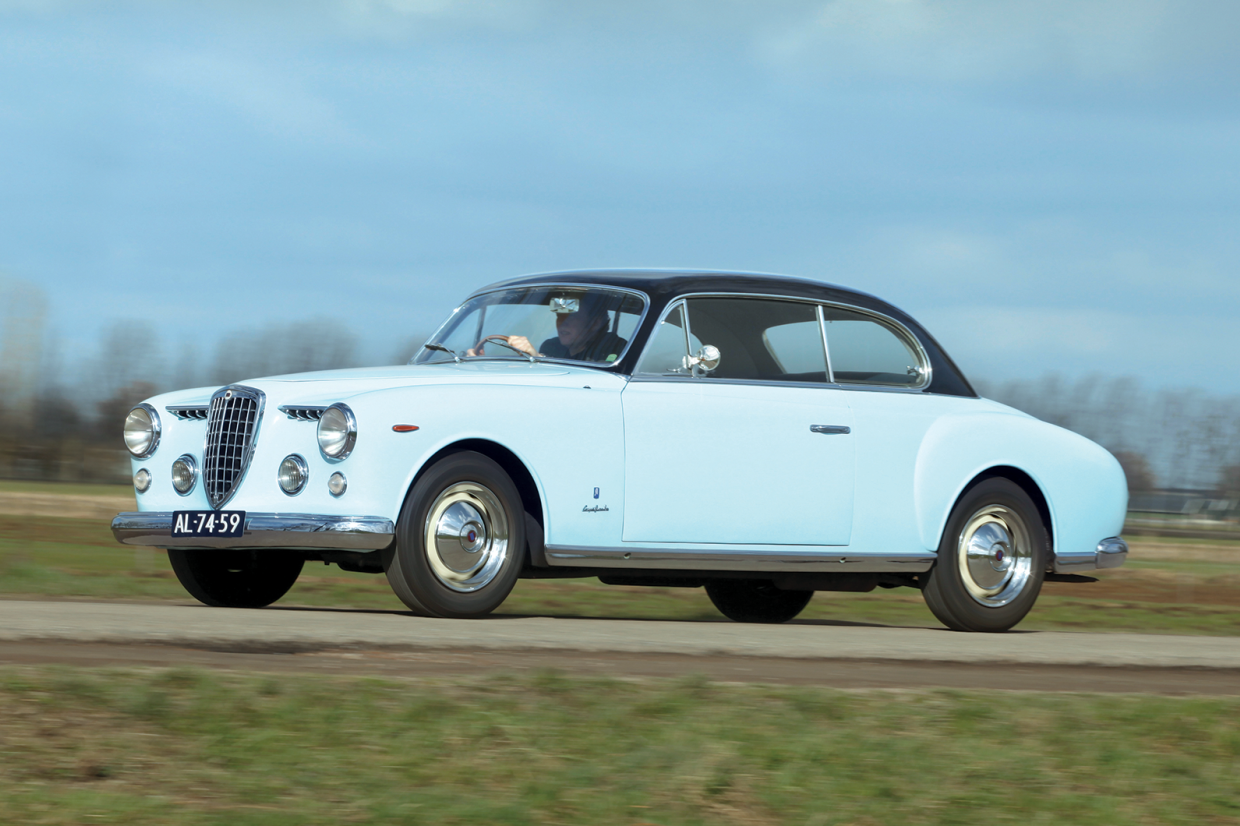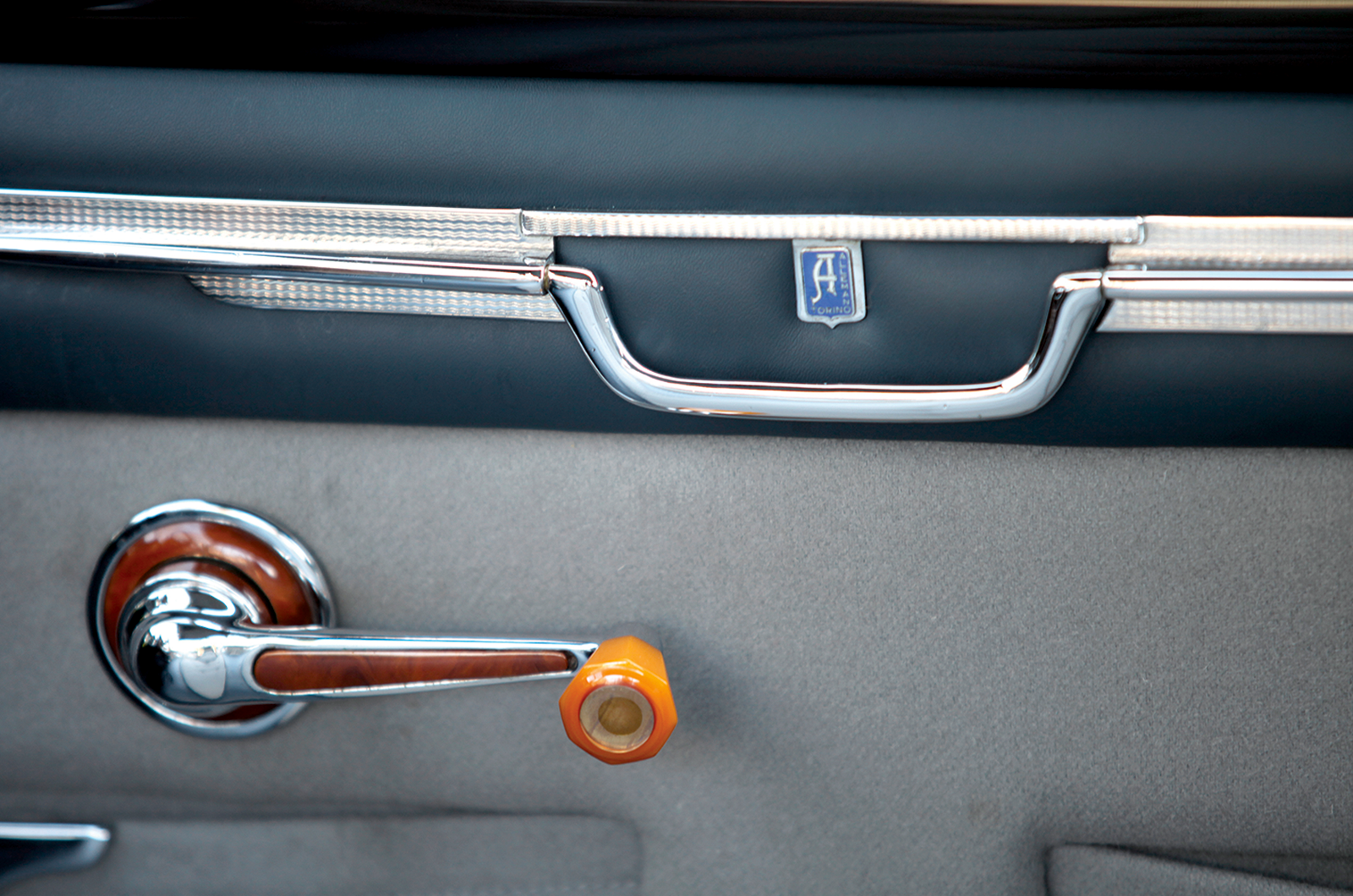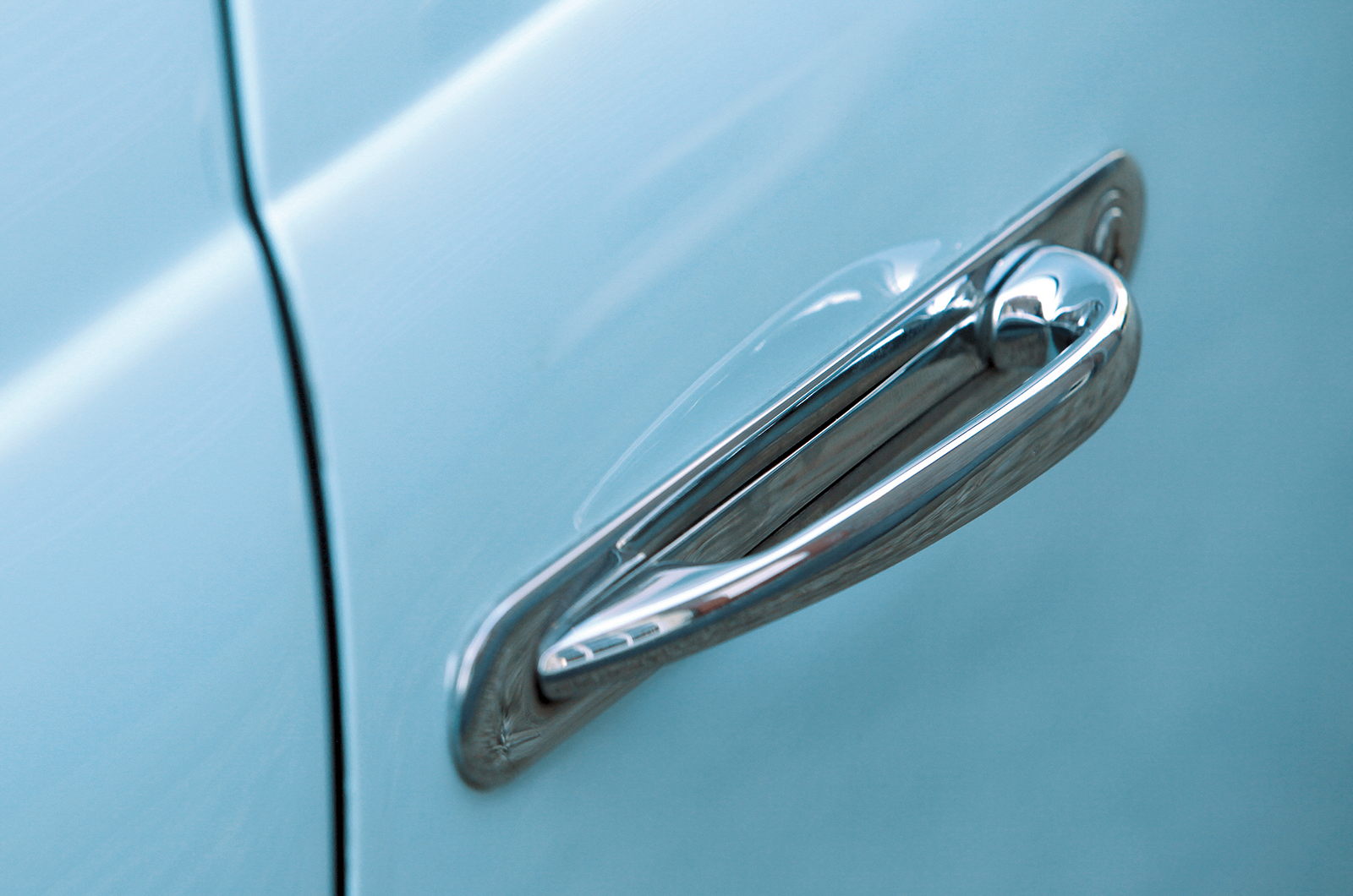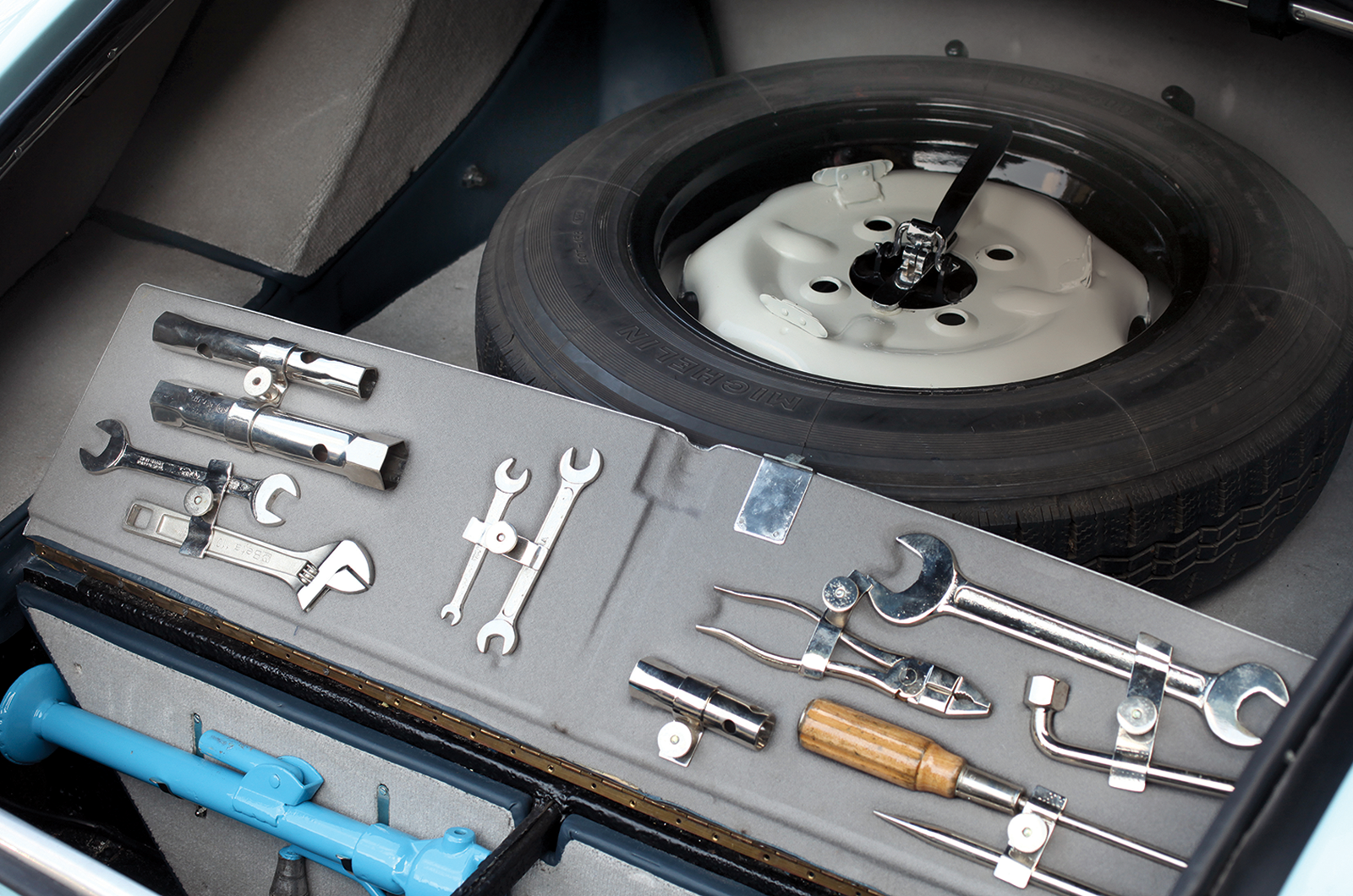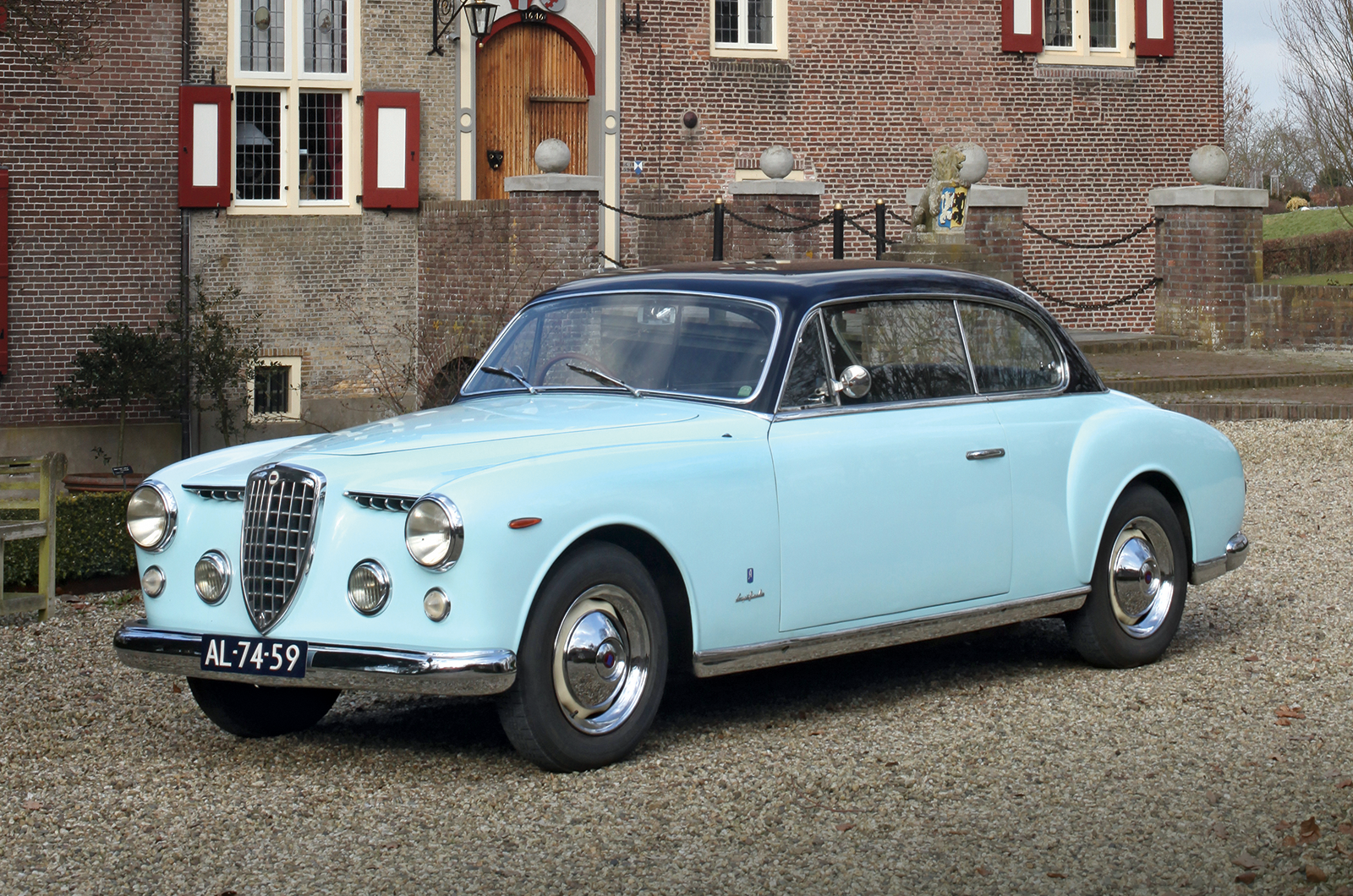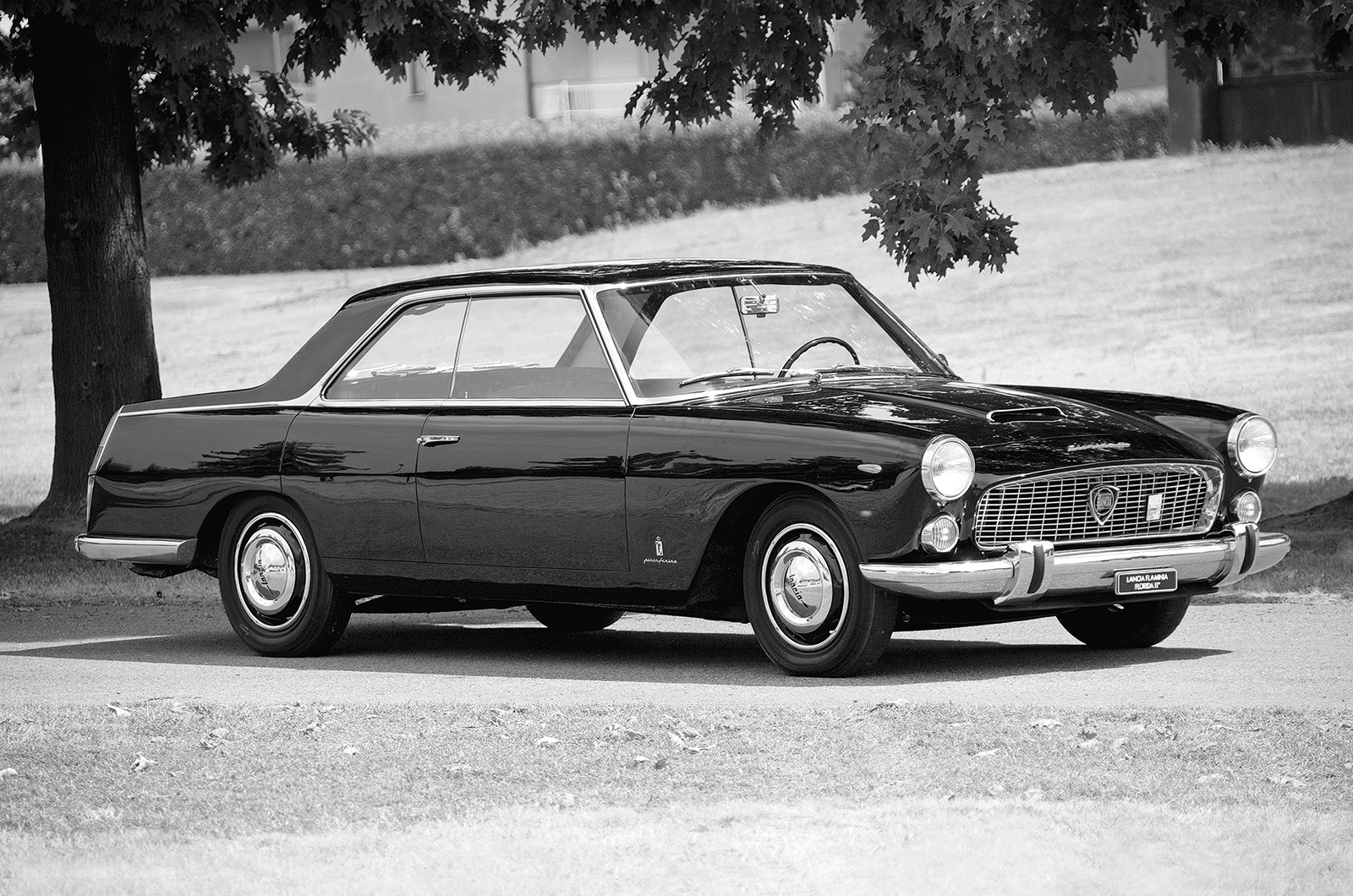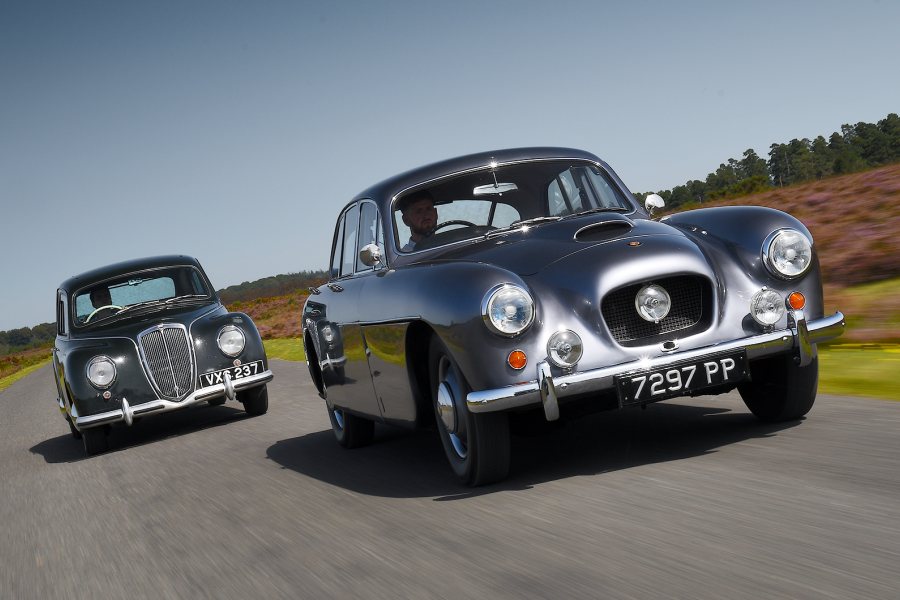It is a lovely thing, evidently restored at great expense at some point in the not-too-distant past.
I first encountered it a few years ago when it was about to be sold by its Dutch collector owner; since then, chassis B531008 has lived in California and Turkey, and has been no stranger to the auction block, be it in Paris, Monaco or Amelia Island.
Now with a Belgian dealer and in search of another new custodian, this unique Lancia has almost certainly clocked up more miles in the air or on the high seas than it will ever do on the public road.
Images: James Mann
Lancia’s Aurelia autotelaio (platform chassis)
Lancia’s B50/B51 chassis was mostly supplied to Pinin Farina
1. B50/B51 (1950-’52)
The first of the long-wheelbase, platform-chassis Aurelias created for coachbuilders, mostly Pinin Farina but also Bertone and Boneschi.
Powered by a 1754cc version of the V6, with the B51 featuring a shorter final-drive ratio and slightly wider tyres.
The 2-litre engine in the B15/B15S was an improvement on the 55bhp, 1.7-litre unit in the earlier B50
2. B15/B15S (1952-’53)
This sober, stretched, six-light limousine featured a derated B21 2-litre engine making 65bhp, along with 16in wheels and alternative axle ratios.
The bodies were constructed by Bertone, with 81 built.
The improved B52/B53 Lancias had more grunt, wider tyres and a higher-ratio differential
3. B52/B53 (1952-’53)
A development of the B50/B51, but with a 2-litre engine from the B21 to counteract the additional weight of their special bodywork.
A wide variety of show cars and limited-run specials, including 47 Giardinetta ‘woodie’ wagons by Viotti.
The final Aurelia autotelaio was mostly used for show cars
4. B55/B56 (1955-’56)
The final platform-chassis version of the Aurelia, based on the de Dion-suspended B12 and mainly used by Pinin Farina as a basis for show cars such as the elegant Florida and Florida II (above), inspiration for the subsequent Flaminia series.
Enjoy more of the world’s best classic car content every month when you subscribe to C&SC – get our latest deals here
READ MORE
Going with the flow: Lancia Aprilia vs Jowett Javelin
Grand tourer supertest: AC Aceca vs Aston Martin DB2 Vantage vs Bristol 404 vs Lancia Aurelia B20 GT
Your classic: Lancia Aurelia B20 GT
Martin Buckley
Senior Contributor, Classic & Sports Car
